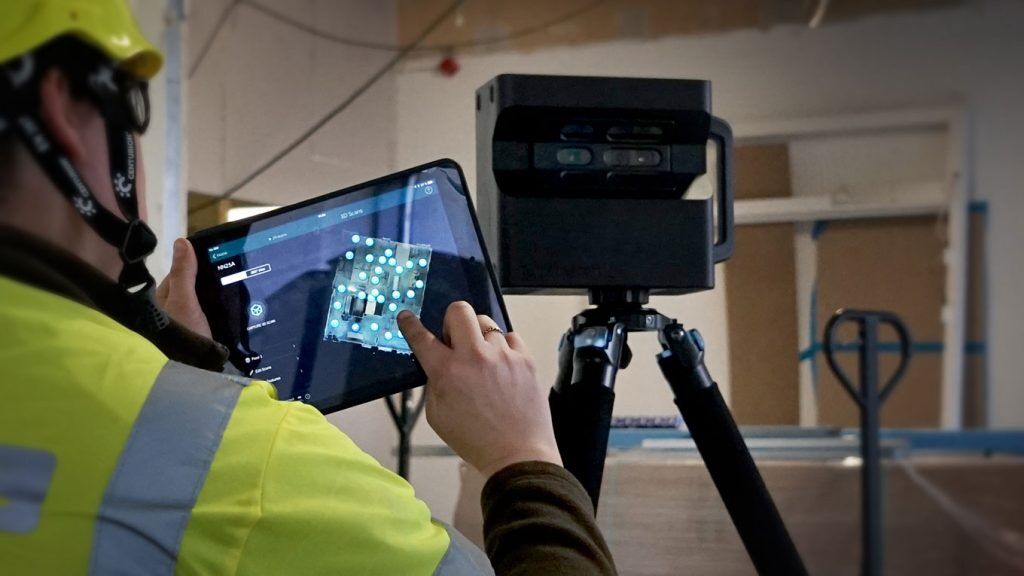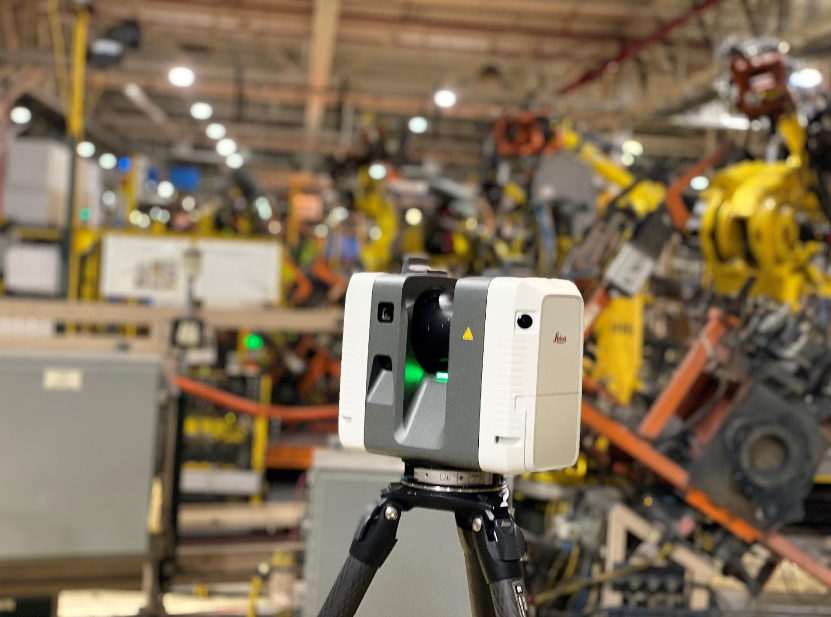Why 3D Scanning Minimizes Project Errors
Exploring the Applications of 3D Laser Scanning in Archaeology and Cultural Heritage Conservation
The assimilation of 3D laser scanning modern technology in archaeology and social heritage conservation notes a substantial innovation in exactly how archaeological sites and artifacts are recorded and assessed. This non-invasive approach gives precise spatial information, disclosing detailed information that were previously difficult to capture. As the applications of this innovation remain to evolve, numerous ramifications for education, conservation, and paperwork emerge, inviting more expedition right into its transformative influence on the area.
Recognizing 3D Laser Scanning Technology
3D laser scanning modern technology has changed the field of archaeology by offering detailed and specific spatial data. This advanced innovation employs laser beams to catch millions of information factors from an item or site, producing an extremely exact three-dimensional representation (3D Scanning). The resulting factor clouds can reveal elaborate information of archaeological websites, structures, and artefacts that could be undetectable to the nude eye
Utilizing this modern technology, archaeologists can document the specific dimensions, forms, and settings of items with unprecedented accuracy. This approach minimizes the danger of human error and removes the requirement for considerable hand-operated dimensions. Additionally, the information gathered can be assessed and shared quickly, assisting in cooperation amongst researchers. By incorporating 3D laser scanning with GIS and various other electronic devices, archaeologists boost their capacity to imagine and translate historical contexts, resulting in deeper understandings right into old societies and atmospheres.
Enhancing Archaeological Documents
3D laser scanning significantly improves historical paperwork with its capacity to produce exact website maps. This innovation helps with thorough artefact analysis, supplying understandings that traditional techniques might overlook. In addition, it guarantees the preservation of contextual data, which is important for understanding the relationships within historical sites.
Exact Website Mapping
While typical mapping methods often battle with capturing the detailed information of archaeological sites, progressed laser scanning modern technology supplies an innovative technique to exact site mapping. This method makes it possible for excavators to develop very outlined and precise three-dimensional depictions of websites, showcasing topographical variants and architectural attributes with exceptional integrity. The capability to record countless information points in an issue of minutes permits comprehensive documents, which can be easily updated and shared among scientists. Furthermore, laser scanning helps with the dimension of complex geometries that would be challenging to evaluate utilizing conventional devices. Consequently, this modern technology improves the accuracy of site maps, adding considerably to the preservation and understanding of social heritage sources.
Thorough Artefact Evaluation
Laser scanning technology greatly boosts the evaluation of archaeological artifacts, offering scientists with unprecedented detail and precision. This approach catches complex surface area structures, measurements, and includes that typical documentation techniques might neglect. By generating high-resolution 3D versions, scholars can closely analyze artifacts without the risk of damages fundamental in physical handling. This precision permits far better comparative research studies, allowing specialists to identify manufacturing strategies, stylistic variations, and potential social significance. The capacity to control and picture information in 3 dimensions helps with a deeper understanding of artefact capability and usage. Generally, laser scanning promotes a much more complete strategy to historical documents, making sure that important information about artefacts is maintained for future research study and education.
Preservation of Contextual Information
Protecting contextual data is necessary for improving archaeological paperwork, as it guarantees that searchings for are understood within their initial ecological and cultural frameworks. 3D laser scanning innovation considerably contributes to this conservation initiative by catching detailed spatial partnerships amongst artifacts, structures, and their atmospheres. By producing accurate 3D designs, archaeologists can record the precise places and orientations of things sitting, facilitating a complete understanding of their context. This modern technology makes it possible for scientists to revisit and analyze websites long after excavation, preserving the stability of contextual information. On top of that, digital documents created via scanning can be shared globally, cultivating collective study and public interaction. Inevitably, maintaining contextual data with 3D laser scanning improves archaeological stories and promotes an extra extensive appreciation of cultural heritage.
Preservation of Cultural Heritage Sites
As improvements in modern technology continue to progress, the preservation of social heritage websites has ended up being increasingly reliant on cutting-edge methods such as 3D laser scanning. This innovation enables the thorough documentation of landscapes, artifacts, and frameworks, recording their exact dimensions and spatial connections in a non-invasive fashion. By developing high-resolution 3D models, scientists can assess and keep an eye on damage patterns, making it possible for aggressive conservation methods.
Additionally, 3D laser scanning assists in the sharing of thorough site data with the global community, promoting cooperation among archaeologists, preservationists, and chroniclers. These versions function as invaluable sources for education and learning and public engagement, raising recognition of cultural heritage issues. The digital documents created can safeguard against loss due to ecological elements, criminal damage, or neglect. In general, 3D laser scanning represents a transformative approach to the conservation of cultural heritage, ensuring that these sites can be studied and appreciated by future generations.

Restoration and Reconstruction Initiatives
The in-depth documentation accomplished with 3D laser scanning plays a substantial role in reconstruction and reconstruction initiatives within archaeology. This technology gives precise measurements and high-resolution imagery, enabling accurate digital designs of artefacts and structures. These models function as important references during repair procedures, enabling archaeologists to picture the initial design and make educated choices regarding materials and methods needed for repair work.
3D laser scanning helps with the reconstruction of damaged or shed aspects by producing in-depth replicas. This process help in ensuring that reconstructions preserve historical honesty while likewise permitting ingenious approaches to recover sites. The capability to evaluate wear patterns and architectural weaknesses via checked data boosts understanding of a site's historical context and its usage gradually. As a result, 3D laser scanning not only preserves the physical elements of social heritage but additionally enriches the narrative of history, directing future reconstruction undertakings.
Educational and Research Study Opportunities
The combination of 3D laser scanning in archaeology opens significant instructional and study opportunities. Academic cooperations can enhance the understanding of ancient sites, while specialized training workshops outfit specialists with essential skills for utilizing this technology. With each other, these initiatives foster a richer engagement with historical methods and approaches.
Academic Collaborations in Archaeology
Collaborative efforts in archaeology have actually ended up being significantly crucial for progressing both educational and study chances. By fostering collaborations among colleges, research organizations, and social heritage organizations, these cooperations help with the exchange of expertise and resources, boosting the quality of archaeological researches. Joint jobs frequently utilize diverse know-how, enabling innovative methodologies and detailed evaluations, particularly in the application of innovations like 3D laser scanning. Such cooperations also advertise interdisciplinary strategies, engaging fields such as history, conservation, and geography scientific research. Furthermore, scholastic collaborations typically cause the development of new educational programs and training programs, preparing the following generation of excavators to properly utilize advanced technologies in their work. Ultimately, these alliances add to the preservation and understanding of cultural heritage.
Training Workshops for Professionals
Educating workshops for specialists in archaeology are significantly essential for boosting skills in the application of sophisticated technologies such as 3D laser scanning. These workshops check out here provide participants with hands-on experience in making use of advanced devices and software, cultivating a much deeper understanding of data capture and evaluation procedures. Professionals can find out to develop precise digital versions of historical sites, which markedly help in paperwork and conservation initiatives. Additionally, these training sessions often consist of discussions on ideal methods and case research studies, promoting expertise exchange among participants. By buying continuous education and learning, experts can remain upgraded on developing modern technologies, eventually boosting the efficiency of their research and cultural heritage conservation efforts. This dedication to skill enhancement is essential for progressing the area of archaeology.
Future Patterns in 3D Laser Scanning for Archaeology
As improvements in innovation remain to reshape different areas, the future of 3D laser scanning in archaeology promises to boost both the precision and efficiency of site documents and analysis. Arising fads indicate an expanding assimilation of synthetic knowledge and artificial intelligence, promoting automated data processing and analysis. This advancement will allow archaeologists to examine intricate datasets faster, bring about faster insights into historical contexts.
The combination of drone innovation with 3D laser scanning is most likely to broaden, making it possible for detailed aerial surveys of historical sites that are tough to accessibility. The raising price of scanning tools will certainly equalize gain access to, encouraging smaller sized organizations and independent scientists to use these tools efficiently. In addition, innovations in digital truth and increased truth will allow immersive experiences for public engagement and education and learning, making historical findings extra easily accessible and interactive. These fads jointly indicate a transformative future for archaeology, improving preservation initiatives and broadening the self-control's outreach.
Often Asked Concerns
Just How Much Does 3D Laser Scanning Equipment Cost?

What Are the Limitations of 3D Laser Scanning?
The restrictions of 3D laser scanning consist of high expenses, potential data processing obstacles, level of sensitivity to environmental conditions, and problem catching complex details in complex surfaces, which can affect the precision and efficiency of checked depictions. (3D Scanning)

Can 3D Laser Scanning Be Made Use Of Underwater?
Yes, 3D laser scanning can be used undersea, however it requires customized devices and techniques to get over obstacles such as water distortion and restricted visibility. Effective applications have been shown in marine archaeology and undersea surveys.
How much time Does a Scanning Project Typically Take?
A scanning job generally takes anywhere from a couple of days to a number of weeks, depending on the intricacy and size of the area being checked, along with the prep work and post-processing requirements included in the project.
Exist Specific Software Program Requirements for Processing 3D Checks?
Yes, particular software program demands for processing 3D scans include programs with the ability of dealing with large point clouds, such as Autodesk Wrap-up, Cyclone, or MeshLab. These tools promote analysis, visualization, and combination right into various applications successfully.
The combination of 3D laser scanning modern technology in archaeology and cultural heritage preservation notes a significant improvement in how historical websites and artefacts are recorded and evaluated. 3D laser scanning technology has actually reinvented the field of archaeology by providing specific and comprehensive spatial information. As advancements in modern technology proceed to develop, the preservation of social heritage websites has actually become progressively reliant on cutting-edge approaches such as 3D laser scanning. As advancements in modern technology continue to reshape various fields, the future of 3D laser scanning in archaeology guarantees to improve both the precision and effectiveness of website documents and evaluation. The assimilation of drone technology with 3D laser scanning is likely to expand, enabling extensive airborne page surveys of archaeological sites that are challenging to gain try this web-site access to.